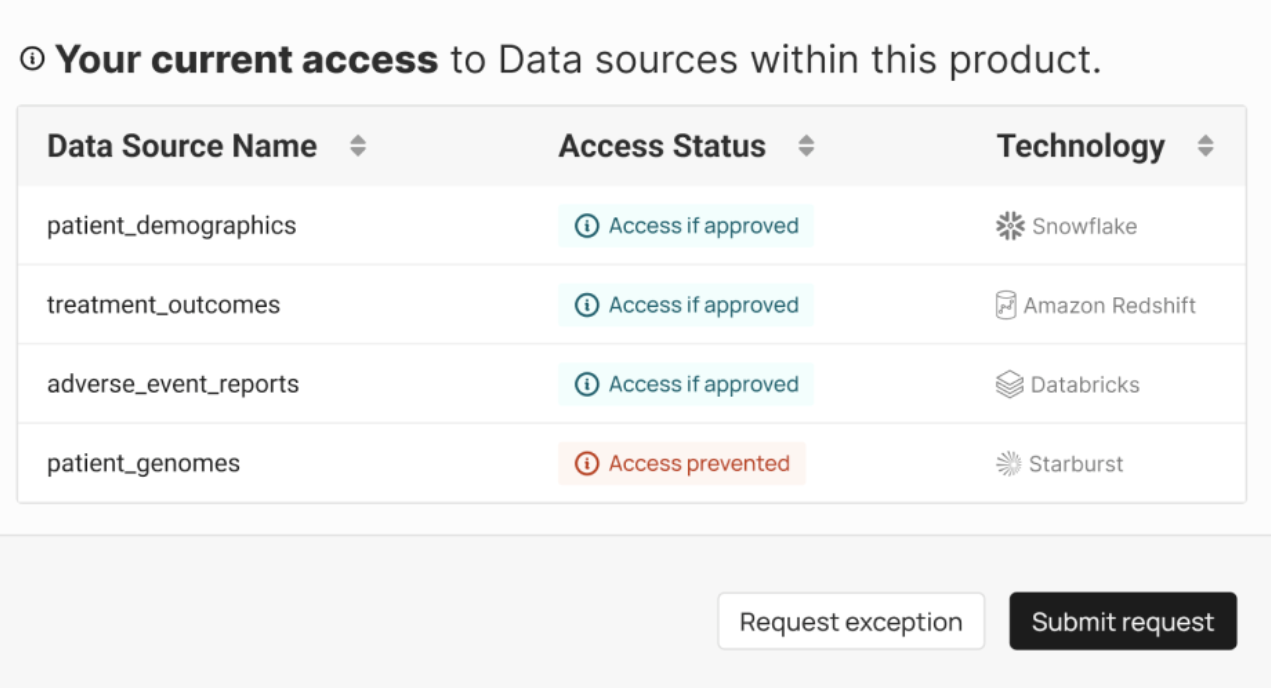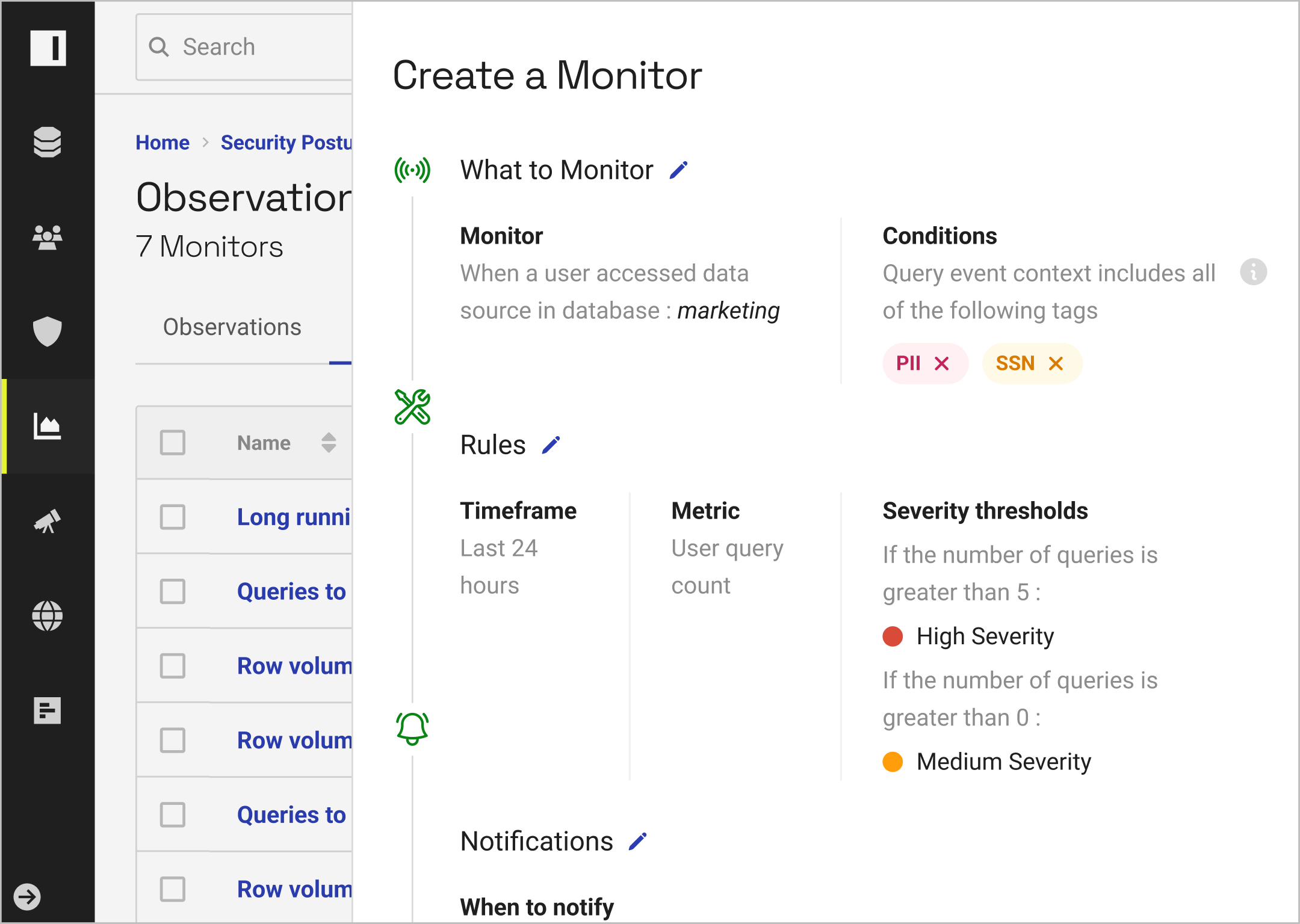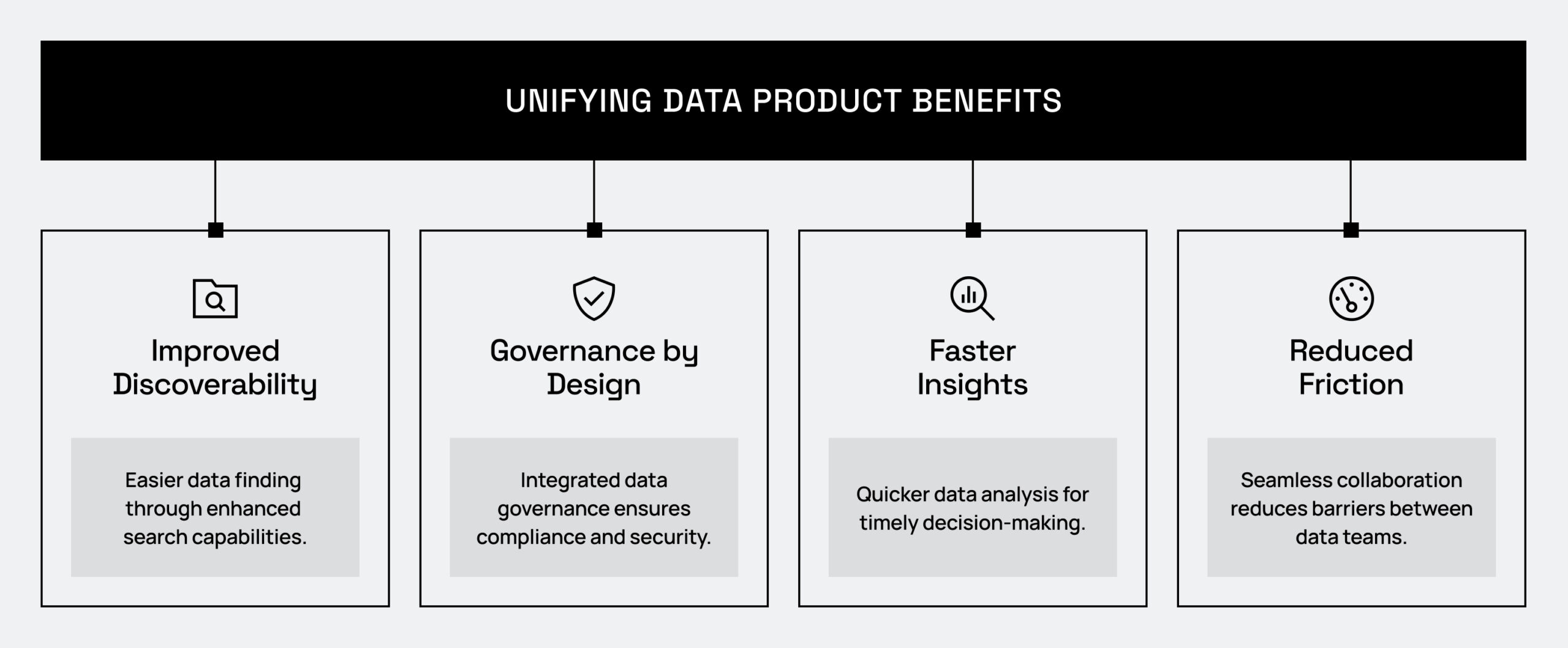“With Immuta, we've got a better pane of glass people can audit, so our data governance team has a better window into what's happening, who has access to what. We've got simpler controls than previously, which reduces some of the friction of bringing new data products and new people on board.”
Kurt Gardiner, Senior Engineering Manager for Data and Machine LearningThe Immuta Data Marketplace solution marks a shift in how data is accessed and utilized internally: Moving away from exposing raw tables and schemas, and toward delivering polished data products. Why does this transition matter?
Raw data alone doesn’t guarantee value – and raw data alone doesn’t equal success. Data products bridge the gap by transforming raw information into actionable insights – which in turn delivers tangible business value.
In this blog, we’ll explore what this shift means for data teams and how the Immuta Data Marketplace empowers data product owners to create and publish shareable, governed data products that data consumers and business leaders can easily discover and use.
Understanding the difference: Data schemas vs. data products

What is a data schema?
A data schema refers to the structured layout of data – think of database tables, raw datasets, or views that define how data is organized (i.e. tables, columns, data types, relationships). Schemas are essential from a technical perspective, but on their own, they are just blueprints of information.
A raw schema or table describes the data’s structure, yet still requires significant context or processing before it becomes useful for decision-making. In other words, a schema represents data as an asset, but not yet data as a product.
What is a data product?
A data product is a curated, ready-to-use dataset packaged specifically for business consumption. It typically comprises data, detailed metadata, semantics, and templates tailored toward a specific function or business need.
While data products often move beyond raw schemas and tables, that doesn’t mean a data product can’t include schemas or tables. Instead, what distinguishes a data product is the additional context and metadata provided around any data — whether structured as tables, views, or more aggregated forms. This context may include descriptions, quality metrics, usage guidelines, and embedded governance policies.
This added layer helps data consumers readily understand, discover, access, share, and use the data independently, without deep technical expertise. The key point isn’t necessarily creating a single “golden record,” but ensuring sufficient metadata and context are included so that consumers can derive business value efficiently.
How to transition from data schemas to data products

You can approach the shift from offering raw schemas to delivering polished data products in a series of practical steps:
Step 1: Identify business-relevant data assets
Start by selecting high-impact datasets that align with your organization’s key business goals or pain points. Work closely with data consumers and business stakeholders to understand their requirements and use cases.
Step 2: Add context and metadata
Once you’ve identified a dataset to turn into a product, enrich it with context so that others can easily understand and use it. Provide a clear description, definitions, and usage guidelines.
Step 3: Define access and governance policies
Turning data into a product isn’t just about packaging the data itself – it’s also about packaging the rules for its use. Implement security, compliance, and data access controls to ensure safe and governed usage.
Step 4: Publish and make discoverable
With the data asset selected, documented, and governed, the next step is to publish it so users can easily find and request it. The Immuta Data Marketplace provides a centralized portal where data producers can register data products for streamlined access.
Step 5: Enable self-service data access
Publishing the product is essential, but the real magic happens in making access self-service. This step is about streamlining how data consumers actually obtain data products. The Immuta Data Marketplace eliminates friction by providing built-in request and approval workflows.
How the Immuta Data Marketplace enables the transition from data schemas to data products
To understand how Immuta supports the transition from data schemas to data products, let’s consider pharmaceutical manufacturing, where quality assurance and regulatory compliance are non-negotiable. Yet, teams are often burdened with raw data schemas — disparate tables filled with production-quality metrics that lack the context needed to drive informed decisions. For instance, production and compliance teams often struggle with inconsistent datasets where quality indicators aren’t standardized. Without added context or integrated governance, these raw tables force users to manually piece together insights, increasing the risk of misinterpretation and regulatory exposure.
Challenges with raw data schemas
Lack of context: Traditional tables provide only structural details (columns, data types) but omit critical metadata such as measurement definitions, quality benchmarks, and thresholds. This forces business users and QA teams to invest significant time interpreting data, delaying decision-making.
Inconsistent governance: Teams independently managing sensitive production data often create inconsistent governance practices, leaving gaps that increase compliance risks.
Operational inefficiencies: Accessing the right data becomes a bottleneck without curated datasets. Delays in data provisioning mean quality issues may be identified too late, elevating risks of production errors and regulatory non-compliance.
How the Immuta Data Marketplace helps
Transitioning to a data product approach using the Immuta Data Marketplace addresses these challenges head-on:
Standardizes quality metrics: Immuta transforms raw manufacturing datasets into governed data products by allowing data product owners to easily embed comprehensive metadata — such as definitions, quality benchmarks, threshold values, and usage instructions — directly into each product. This ensures consistent understanding and application across QA, manufacturing, and compliance teams, helping eliminate ambiguity and accelerate decision-making.

Embeds governance and compliance: Immuta automates policy enforcement by embedding access controls and regulatory guidelines directly into each data product. This ensures only authorized QA or regulatory personnel access sensitive production data, significantly reducing compliance risks.

Streamlines data access: The Immuta Data Marketplace acts as a self-service portal for quick discovery, request, and provisioning of the exact data needed, using dynamic, automated access controls to remove traditional delays and manual intervention.

Improves operational efficiency and risk mitigation: Immuta automatically creates detailed, auditable trails of data usage and access events, enabling complete transparency and simplifying regulatory audits. With streamlined provisioning and clear visibility, QA teams can efficiently demonstrate compliance and proactively manage operational risks.

By shifting from raw schemas to curated data products, drug manufacturers move beyond disconnected datasets’ limitations. The Immuta Data Marketplace enables organizations to unlock significant business value from their data — delivering faster insights, reducing operational friction, and improving regulatory compliance.
Tapping into the value of data products with the Immuta Data Marketplace

Transitioning to a data product approach and implementing an internal data marketplace delivers significant benefits for both data producers and consumers. With the Immuta Data Marketplace solution, you can easily streamline data product publishing, discoverability, access, collaboration, and governance, all from a centralized location. In turn, this enables:
- Faster time to insights: Data products are immediately usable and easily comprehensible, thanks to added context and metadata. Instead of spending days interpreting raw data or waiting for IT to prepare data, consumers request access to a curated data product and can start analysis with minimal delays.
- Self-service discoverability: With the Immuta Data Marketplace, data consumers can independently identify the data products that best suit their needs, and request access to them. This reduces the burden and reliance on data governance and IT teams to assist in curating the right data.
- Reduced friction: Data products establish a clear contract between data product owners and data consumers, and the Immuta Data Marketplace reduces the back-and-forth communication typically needed to interpret raw data.
- Governance by design: When data access policies, governance standards, and continuous monitoring are embedded into data products from the start, you can easily and confidently adhere to regulatory and company rules.
Conclusion
Shifting from sharing raw data schemas to delivering refined data products is necessary for organizations aiming to be truly data-driven. By investing in data products, you’re investing in making your data usable and valuable for the long run.
Tools like the Immuta Data Marketplace solution provide the tooling and automation to implement these best practices quickly. Start small: pick one high-value dataset and turn it into a governed data product using Immuta.
Make the move to data products.
Don’t let your data sit idle as raw schemas. See how to make curated data products available to any authorized user.



